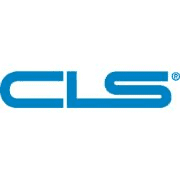Type Edge Act Corporation Website www.cls-group.com Founded 2002 | Area served Worldwide Headquarters New York City | |
 | ||
Industry Banking, financial services Profiles | ||
David puth ceo cls group
CLS (originally Continuous Linked Settlement) is a specialist US financial institution that provides settlement services to its members in the foreign exchange market (FX). Although the forex market is decentralised and has no central exchange or clearing facility, firms that chose to use CLS to settle their FX transactions can mitigate the settlement risk associated with their trades.
Contents
CLS does this through the operation of a payment versus payment (PvP) settlement service which mitigates settlement risk for the FX transactions of its settlement members and their customers (third parties).
The service started operating in 2002 as an Edge Act Corporation, a limited purpose bank regulated by the Federal Reserve Bank of New York.
Since it began operations in 2002, CLS has rapidly become the market-standard for foreign exchange settlement. As a result, the Financial Stability Oversight Council (FSOC) officially designated CLS a Systemically Important Financial Market Utility in July 2012.
The single day record for gross-value settlement, set on 19 March 2008, stands at US$10.3 trillion, for 1,113,464 payment instructions. The single day record for gross-volume settlement, set on 28 May 2013, is 1,992,652.
In 2002 CLS was launched with 39 Members and seven currencies. As of November 2015 CLS settles 18 Currencies, has 74 Shareholders, 64 Settlement Members and over 9,000 active Third Party participants.
Service
CLS operates a global multi-currency cash settlement system through which settlement risk can be mitigated with finality using a combination of PvP settlement over CLS central bank accounts, local real-time gross settlements systems (RTGS) and multilateral payment netting supported by a resilient infrastructure.
In a PvP system both sides’ payment instructions for a FX transaction are settled simultaneously. Without PvP there is a serious risk that one party to a FX transaction will deliver the currency it owes, but not receive the other currency from its counterparty, resulting in the loss of principal. This is known as settlement risk, or “Herstatt Risk”, after the German bank, Bankhaus Herstatt, which collapsed in June 1974 leaving many of its FX counterparties with significant losses.
How it works
Following an FX transaction, Settlement Members submit payment instructions to CLS. These instructions are authenticated and matched by CLS and maintained by the system until settlement date. The CLS daily settlement cycle operates with settlement and funding occurring during a five-hour window when all real time gross settlement (RTGS) systems in the CLS settlement currency jurisdictions are open and able to make and receive payments. This enables simultaneous settlement of the payments on both sides of a FX transaction.
Each Settlement Member holds a single multi-currency account with CLS. At the start and end of a normal settlement day, each Settlement Member has a zero balance on its account. Under normal operations of the settlement service, CLS starts and ends the day with a zero balance in its central bank accounts and in its Settlement Member accounts. Settlement Members may submit instructions relating to their own FX transactions as well as the FX transactions of their third party customers directly to CLS.
CLS holds accounts with each of the central banks whose currencies it settles.
On each settlement date, upon determining that the accounts of the submitting Settlement Members satisfy several risk management tests, CLS simultaneously settles each pair of matched payment instructions by making the corresponding debit and credit entries in the Settlement Members’ accounts at CLS. The settlement of the payment instructions and the associated payments are final and irrevocable.
For example, (GBP/USD = 1.50, EUR/USD = 1.25):
These obligations are funded into and from each member’s respective multi-currency account.
Another key element of the CLS Settlement Service is the liquidity efficiencies delivered through multilateral payment netting. On each day participants will very likely have more than one trade to settle—in practice, major banks will have hundreds or thousands of trades each day. Each day prior to settlement, CLS calculates the funding required of each Settlement Member on a multilateral netted basis. The amount of cash required by CLS to settle all payment instructions is reduced, allowing each Settlement Member to transfer only the net amount of its payment obligations in each currency, rather than the total amount of each trade to be settled. On average, CLS netting efficiency is in the region of 96 percent.
In/Out Swaps
In addition to the usual settlement service, the In/Out Swap process is done before the settlement windows to reduce the payment obligations to CLS and to mitigate liquidity pressures. An In/Out Swap is an intraday swap consisting of two equal and opposite FX transactions that are agreed as an intraday swap.
One of the “legs” is settled inside CLS in order to reduce each Settlement Member’s net position in the two relevant currencies. The other “leg” is settled outside CLS.
The In/Out Swap further compresses payment obligation by an average of 75%, which results in a funding requirement in CLS of less than 1% of the total gross settlement value.
Currencies
CLS has expanded the number of currencies it settles over the years and currently settles the following currencies:
